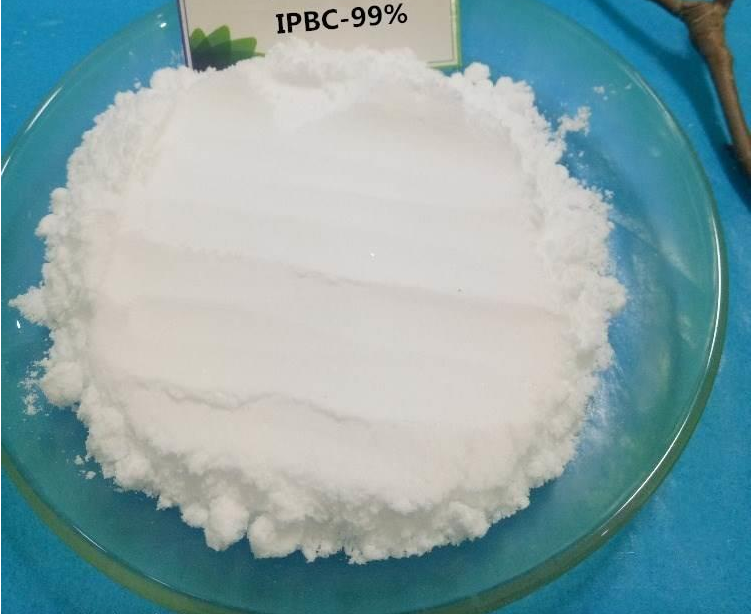
In the realm of cosmetics, personal care products, and industrial applications, preservation is paramount. Iodopropynyl Butylcarbamate, commonly referred to as IPBC, a potent antimicrobial agent that plays a crucial role in extending the shelf life of various formulations.
Chemical Composition and Structure

IPBC is a water-soluble preservative that belongs to the family of carbamates. Its chemical structure consists of a butylcarbamate group attached to an iodopropynyl moiety. This unique structure contributes to its effectiveness against a broad spectrum of microorganisms, including bacteria, fungi, and yeasts.
Synthetic Process for IPBC Production
The production of IPBC involves several synthetic steps to achieve the desired chemical structure and purity. Here’s an overview of the process typically involved in producing IPBC:
Starting Materials
- Butyl Carbamate: This compound serves as the starting point. Butyl carbamate (also known as n-butyl urethane) is commercially available and is a key precursor in the synthesis of IPBC.
- Iodopropynyl Alcohol: Another crucial starting material, iodopropynyl alcohol, provides the iodine-containing moiety necessary for IPBC’s antimicrobial activity.
Reaction Steps
#1 Formation of Butyl Isocyanate
- Butyl carbamate undergoes thermal decomposition to form butyl isocyanate.
- Reaction: Butyl Carbamate → Butyl Isocyanate + Carbon Dioxide
#2 Addition of Iodopropynyl Alcohol
- Butyl isocyanate then reacts with iodopropynyl alcohol in the presence of a suitable catalyst (often a base or an acid catalyst) to form Iodopropynyl Butylcarbamate (IPBC).
- Reaction: Butyl Isocyanate + Iodopropynyl Alcohol → IPBC + By-products
#3 Purification
- The crude IPBC product is purified to remove any impurities and by-products formed during the reaction steps. Purification may involve techniques such as distillation, crystallization, or chromatography depending on the specific process and desired purity level.
Formulation and Application
- Once purified, IPBC can be formulated into various products such as liquid solutions or solid preparations suitable for incorporation into cosmetics, personal care products, paints, adhesives, and other industrial applications.
Key Considerations
- Reaction Conditions: The synthesis typically occurs under controlled conditions of temperature, pressure, and pH to ensure optimal yield and purity.
- Safety and Environmental Concerns: Manufacturers must adhere to safety protocols and environmental regulations during the production process to minimize risks associated with handling chemicals like isocyanates and iodine-containing compounds.
- Regulatory Compliance: IPBC used in commercial products must meet regulatory standards set by authorities such as the FDA (in the United States) and the European Commission (in Europe) regarding allowable concentrations and safety assessments.
Applications in Cosmetics and Personal Care Products
IPBC is widely utilized in the cosmetics and personal care industry for its ability to prevent microbial contamination. It is incorporated into formulations such as shampoos, conditioners, lotions, creams, and makeup products. By inhibiting the growth of harmful microorganisms, IPBC helps maintain product integrity and ensures consumer safety.
Industrial Uses
Beyond cosmetics, IPBC finds applications in various industrial products where microbial control is crucial. These include paints, adhesives, metalworking fluids, and wood preservatives. Its effectiveness in these settings helps prevent deterioration and ensures product quality over time.
Mechanism of Action
The mechanism of action of IPBC involves disrupting microbial cell membranes and inhibiting key enzymes necessary for microbial growth. This dual-mode of action makes it particularly effective against a wide range of microorganisms, while its water solubility enhances its applicability in aqueous formulations.
Regulatory Status and Safety
IPBC has been extensively evaluated for its safety and efficacy. It is approved for use in cosmetics and personal care products by regulatory agencies such as the FDA and the European Commission. However, like any preservative, its concentration in formulations must comply with regulatory limits to ensure product safety.
Challenges and Considerations
Despite its benefits, IPBC, like many preservatives, has faced scrutiny regarding potential allergenicity and environmental impact. Manufacturers and formulators must balance the need for effective preservation with consumer safety and environmental sustainability.
Final Note
Iodopropynyl Butylcarbamate (IPBC) stands as a cornerstone in the preservation of cosmetics, personal care products, and industrial formulations. Its broad-spectrum antimicrobial activity, coupled with its water solubility and regulatory approval, makes it a preferred choice for ensuring product stability and safety. As research and regulations evolve, IPBC continues to play a vital role in meeting the stringent demands of microbial control in modern formulations.
As with any chemical additive, responsible use and adherence to regulatory guidelines are essential to maximizing its benefits while minimizing potential risks.
